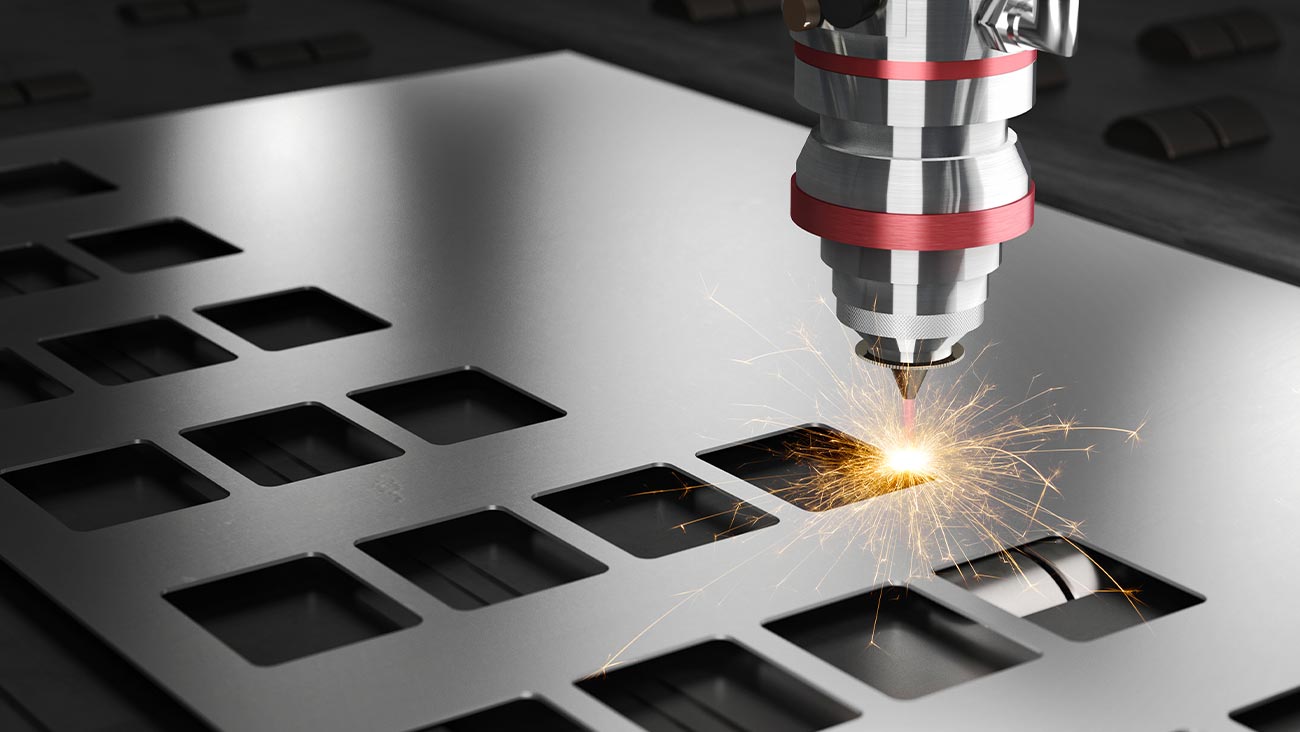What Is Laser Cutting? A Closer Look at a Versatile Technology

Laser cutting is a cornerstone of various industries. With its ability to precisely cut and engrave a diverse array of materials, it is well suited for the demands of manufacturing and craftsmanship. In this blog post, we will explore the basics of this technology, including its principles, applications, and myriad benefits.
What Is Laser Cutting? How It Works
Laser cutting is a highly precise and versatile technology that utilizes a concentrated beam of light, known as a laser, to cut or engrave various materials. By focusing the laser beam onto the material's surface, the intense heat vaporizes, melts, or burns the material along the desired cutting path. This process allows for clean and accurate cuts with intricate details.
Laser cutting is widely used across industries because of its ability to work with different materials such as metals, wood, acrylic, fabric, and more. It offers numerous advantages, including exceptional precision, speed, and customization possibilities, making it a preferred choice for manufacturing, design, and artistic applications.
The Laser Cutting Process
The laser cutting process encompasses a series of steps and components that work together to achieve precise and accurate cuts. It begins with creating a digital design using computer-aided design (CAD) software. Once the design is finalized, it is transferred to a laser-cutting machine equipped with a high-powered laser source. The material to be cut is prepared and positioned on the cutting bed, and the laser beam is focused onto the material's surface using lenses.
The operator sets up parameters such as laser power, cutting speed, and focal length based on the material being used. When the cutting process begins, the laser beam heats the material, either vaporizing, melting, or burning it along the desired cutting path. The computer-controlled motion system guides the laser along the predetermined path, following the design specifications. Cooling systems and assist gas may be employed to optimize the cutting process.
After the cutting is complete, any post-processing tasks, such as removing debris or refining edges, may be carried out. Industries such as manufacturing, architecture, automotive, aerospace, metal fabrication, fashion, and crafts all benefit from this technology.
Suitable Materials
Laser cutting is compatible with a diverse range of materials. Metals, including stainless steel, carbon steel, aluminum, brass, and copper, can be easily cut and shaped with precision using lasers. Wood, another material suitable for laser cutting, encompasses various types like plywood, MDF (medium-density fiberboard), hardwood, and veneer.
The laser's focused beam can cut intricate designs and patterns or even engrave textures onto the wood surface. Besides metals and wood, laser cutting also finds applications in non-meticallic materials such as acrylic, glass, fabric, leather, paper, and plastics, helping artists push the boundaries of creativity.
Understanding Laser Cutting Types
Vaporization Cutting
In vaporization cutting, a focused laser beam heats the material to its vaporization point, causing it to evaporate and create a narrow cut. This method is commonly used for precise cutting of thin materials like foils, fabrics, and paper.
Melt and Blow Cutting
Melt and blow cutting involves melting the material with the laser beam and using a gas jet, such as nitrogen or oxygen, to blow away the molten material and create the cut. This technique is suitable for cutting thicker materials like metals and plastics.
Thermal Stress Cracking: Thermal stress cracking is used primarily for brittle materials like glass. The laser beam creates a localized area of intense heat, which induces controlled fractures along the desired cutting path. The material is then separated along these fractures, resulting in a clean cut.
Flame or Reactive Cutting
Flame cutting, also known as oxy-fuel cutting, is a process where a high-temperature flame generated by a fuel gas (e.g., acetylene, propane), and an oxidant (e.g., oxygen) is used to heat the material to its ignition point. Once ignited, a stream of oxygen is directed onto the heated material to oxidize it and create the cut. Flame cutting is commonly used for thick metals and is known for its high cutting speed.
Sublimation Cutting
Sublimation cutting is primarily used for organic materials like plastics and wood. The laser beam heats the material, causing it to undergo sublimation, transforming directly from a solid to a gaseous state. The gas is then blown away, leaving a clean cut.
It's important to note that the availability and suitability of each cutting technique may depend on the specific laser system, material properties, and desired outcome. Laser-cutting technologies continue to evolve, leading to the development of new methods and variations that offer enhanced precision, speed, and versatility in various applications across industries.
How Accumet Can Support Your Laser Cutting Needs
Accumet is a trusted provider of laser cutting services that can effectively support your specific cutting needs. With a highly skilled team and a commitment to precision, we deliver exceptional results across various industries.
By leveraging state-of-the-art equipment and advanced laser-cutting technology, we ensure the highest level of accuracy and efficiency in our operations. Whether you require cutting services for metals, non-metals, or specialty materials, we offer a wide material selection, catering to a range of applications and design requirements. Our ability to provide customized solutions allows for intricate designs, precise cuts, and personalized engraving, ensuring your unique project needs are met.
We prioritize rapid turnaround times without compromising quality and understand the importance of meeting deadlines. Our team maintains rigorous quality control measures throughout the process to guarantee that each laser-cut piece meets the highest standards.
Final Thoughts
Laser cutting is a transformative technology offering precise and versatile cutting solutions. For top-notch laser cutting services, partner with Accumet to unlock its full potential. Contact Accumet today to achieve your manufacturing goals with precision and expertise.
Read More
How the Telecom Chip Shortage Has Affected the Semiconductor Industry and How Accumet Can Help




